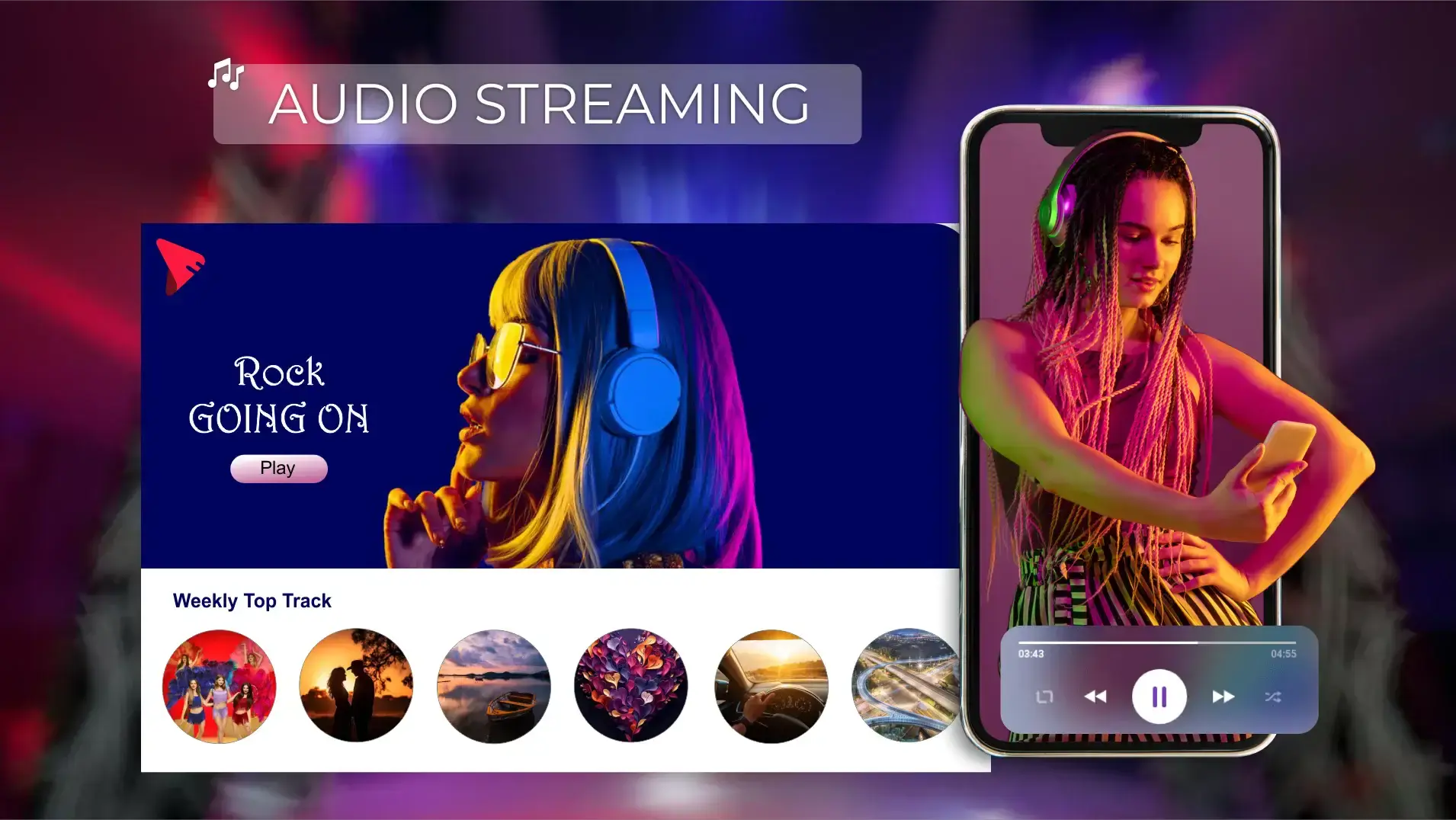Ultimate Audio Streaming: Top Tips & Tricks Guide
Unlock the world of seamless audio streaming with our Ultimate Guide! Discover expert tips and tricks for flawless streaming experiences.

Streaming is the subtle technology of audio or video transmission continuously through wireless or wired internet connectivity at a rapid pace.
The advancement of technologies has led to a significant improvement in audio recordings. Those are the days and eras when you gave priority to audio recordings on paper. Users of audio streaming services have grown significantly in number. Let’s understand what is audio streaming first:
Table of Contents
ToggleWhat is Audio Streaming?
Audio streaming is the digital transmission of audio content over the internet. Using audio streaming, users can listen to music, podcasts, radio shows, and other audio data in real-time or on-demand. It entails the constant transfer of audio content that may be accessed and played by a variety of gadgets, including smartphones, tablets, computers, and smart speakers.
You may listen to, play, and stream whatever kind of audio and podcasts you want on an audio streaming platform.
How does streaming work?
The way streaming operates is by dividing large files (such as movies) into smaller files or data packets. Your browser receives these data packets, and the video player there converts them into a movie. The movie begins to play as soon as your browser has sufficient data packets to do so.
The majority of streaming websites transfer content from a server to a device using the standardised TCP/IP layers (transmission control protocol/internet protocol) as opposed to UDP (user datagram protocol).
Let’s understand in more detail-
For data packets to arrive at their destination and in the correct sequence, TCP/IP is a more dependable protocol. However, UDP-based streaming websites typically provide speedier speeds. YouTube combines TCP and UDP, while Netflix, Amazon Prime, and Spotify use TCP.
The technical setup needed will vary depending on the type of streaming you intend to accomplish. Mobile streaming, desktop software streaming, and multistreaming are the three main possibilities. You can utilise desktop streaming software, multistreaming software, video conferencing or webinar tools, social networks, or desktop streaming programs for this.
Advantages of Audio Streaming
Over the past few years, there has been a huge growth in the podcast sector. More than two million podcasts were registered on Google in 2022, according to Google. Although podcast streaming is becoming more and more popular, the market is not as developed as it is for other websites like YouTube.
Some of the most popular podcasting trends to watch out for are listed below.
Podcast marketing: Promoting businesses or items on a podcast is a crucial step in standing out from the competition and attracting listeners. When it comes to podcasts, listeners are actually more accepting of advertisements than they are of radio. Customers are aware that brand partnerships and sponsorships support the content they love since podcasts cater so well to their own interests
Audiobooks: Because they make it easy to listen to your favourite writers and discover new ones while on the road, audiobooks are becoming more and more popular. One in five Americans, according to Pew Research, listens to audiobooks.
In fact, businesses and content producers have a fantastic opportunity to reach a wider audience and support emerging writers through audiobooks.
Business Benefits of Audio Streaming
Let’s read about the reasons why many businesses might benefit from programmatic audio advertising-
- Audiences are the focus of audio advertising
You may target users with audio adverts according to their demographics, behaviour, and geography. In addition to helping marketers more easily reach their goal, this enables two persons in the same region to receive separate adverts.
- Audio-based marketing enables data tracking
Advertisers can gather information on important parameters, such as completion rate—the percentage of users who listen to an advertisement through to the finish or ignore it—by using programmatic audio ads.
When creating ad campaigns, it is crucial to be able to monitor your audience’s actions, interactions with your advertisement, and post-ad consumption.
- Sound-based marketing enhances brand memory
Nielsen reports that 61% of podcast listeners were more inclined to make a purchase after hearing audio advertisements for well-known national brands and those audio commercials have a 24 percent higher recall rate than display ads.
Top Audio Streaming Platforms
With the introduction of the Internet, we are inundated with content that is always available to us at our convenience. There are several platforms available that provide a large library of entertainment, including films and TV series, for a fair monthly price. This holds true for music as well.
Nowadays, there is an increasing amount of individualised live audio streaming available for audiences around the world-
- Spotify
- YouTube Music
- Apple Music
- Amazon Music Unlimited
- Pandora
The days of music-focused television networks like Channel V and MTV are long gone. Listeners to these music streaming services have access to a vast collection of songs from various genres and countries.
Fortunately, many of the sites offer music catalogues with over 100 million tracks and allow you to stream from different devices. Your monthly cost should be your first consideration when assessing your options.
Conclusion
Your audience will appreciate the best streaming experience you can provide if you make a one-time investment in top-notch technical gear. This holds true for novices as well. You don’t need to budget a lot of money because there are currently several nice, affordable options for headphones or microphones available.
But audio is just as complicated as video, so it’s best to learn the fundamentals. Everyone organising a livestream wants to provide a high-calibre product, after all. The only way to motivate your target audience going forward is to do this, of course with engaging content.